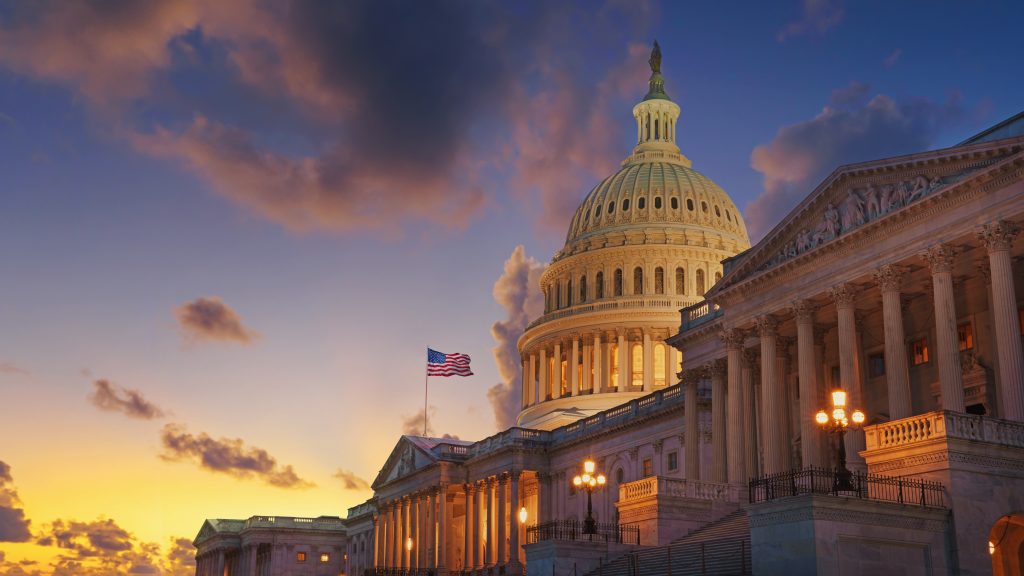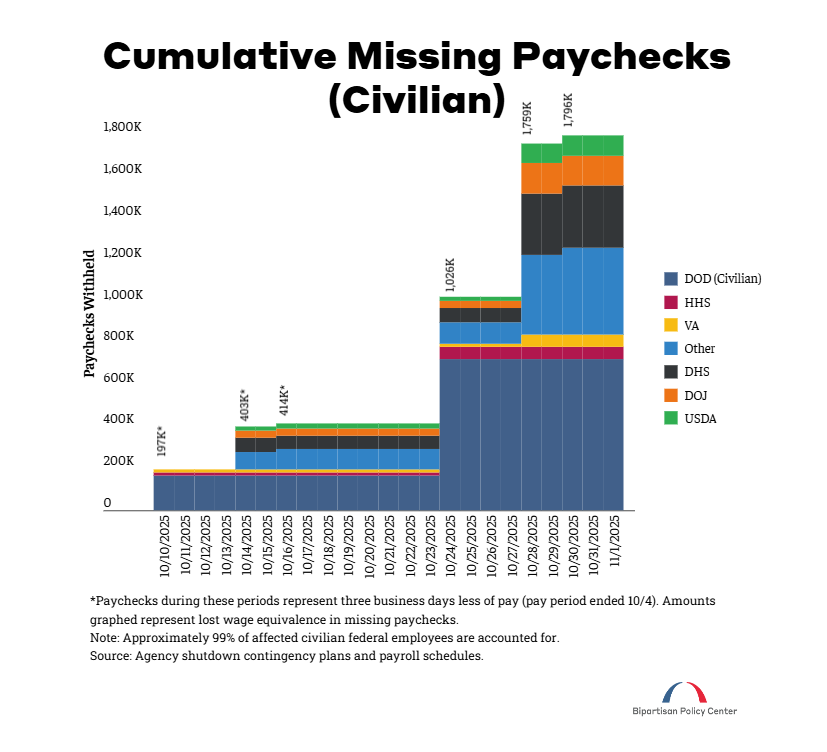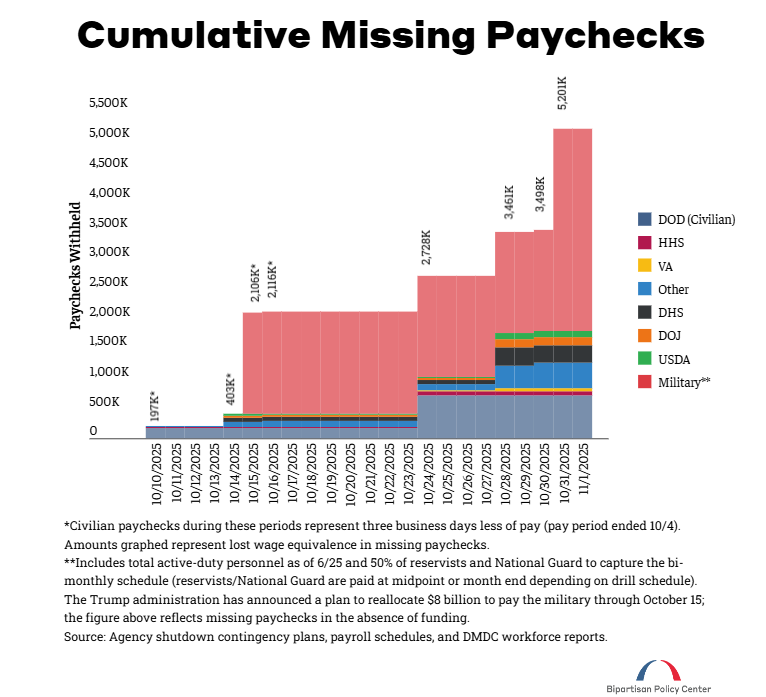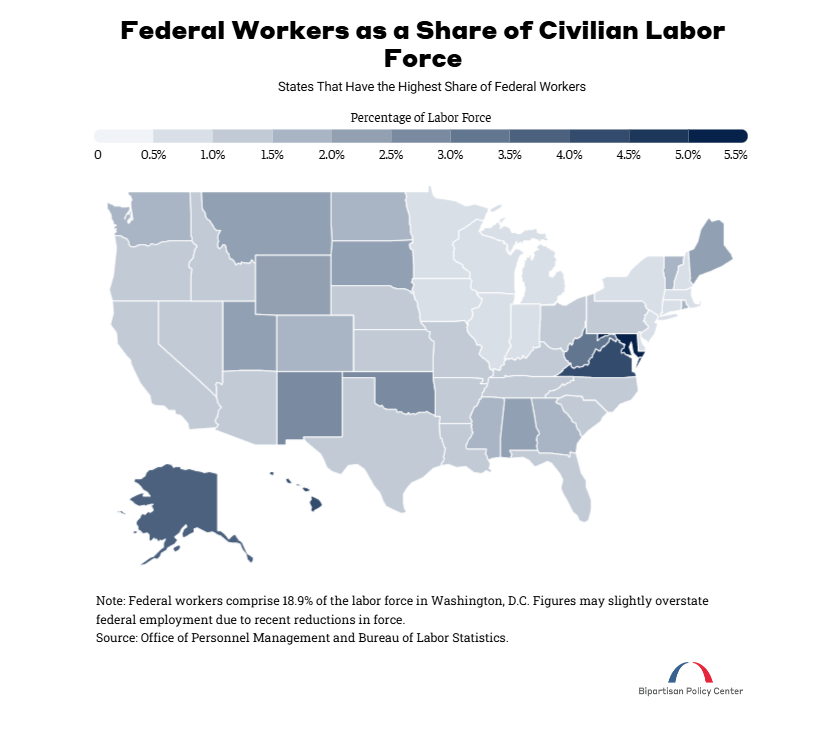
Click here to watch Senator Lankford’s comments
On October 1, the U.S. federal government shut down due to a lapse in appropriations. During this current shutdown:
- At least 700,000+ federal employees have been furloughed, with nearly as many continuing to work without pay.
- 3 million active-duty personnel and over 750,000 National Guard and reserve personnel are also required to serve, potentially without pay.
- The first federal paychecks have been impacted as of October 10.
- October 15 would be the first time in history that members of all branches of the military miss a paycheck due to a government shutdown. The Trump administration announced on Saturday, October 11 that $8 billion would be reallocated to cover military pay for the first paycheck, although there is uncertainty over whether this action will run afoul of the Antideficiency Act.
Congress has yet to enact full-year appropriations bills or a continuing resolution to fund programs that operate on annual spending plans, which represent approximately one-quarter of government operations. As a result, the federal government has entered a shutdown.
This means that federal agencies are required by law to cease non-critical activities and furlough non-essential employees until lawmakers reach a resolution. While some excepted federal employees—and nearly all military personnel—remain on duty, they will soon stop receiving paychecks unless they have funding outside of annual appropriations. Exempt employees—those whose pay is funded outside of the annual appropriations process—continue working and are paid.
Missed paychecks hurt not only individuals, but also the communities that depend on them. This explainer highlights the specific timing of missed paychecks as well as which regions of the U.S. are most impacted.
When Will Federal Employees Miss Their First Paycheck?
Depending on their specific pay date, civilian federal employees have and will continue to receive their scheduled paychecks on October 10, 14, or 16 (variation depends on the government’s various payroll processing systems). However, because the last federal pay period ended on October 4—and includes workdays after the shutdown began on October 1—these paychecks will typically be missing three days’ worth of pay for employees who aren’t funded outside normal appropriations, regardless of whether that employee is furloughed or required to work. Civilian employees will experience their first fully missed paycheck on October 24, 28, or 30, depending on the agency and payroll processing system. If the shutdown lasts through the end of October, nearly 1.8 million paychecks will be withheld from civilian employees of federal agencies. (A portion of that figure represents the lost wage equivalence of paychecks partially withheld during the first pay period impacted by the shutdown.)

When Will Military Personnel Miss Their First Paycheck?
Active-duty military personnel, as well as some reserve personnel and members of the National Guard, are paid on the day after the immediately preceding pay period. (Unlike civilians, the military is paid not biweekly but twice a month.) Service members were paid for the end of September on October 1, but under existing appropriations they would not receive a paycheck on October 15.
The Trump administration has announced that $8 billion will be reallocated to fund the military during this first pay period. Even if this funding is acquired, if the shutdown continues through the military’s next payday on October 31, over 1.7 million paychecks could be withheld from members of the armed forces. (Due to the nature of drilling schedules for National Guardsmen and reserves, it is difficult to know exactly if they are paid at the midpoint or the end of a month for completing their training.)
Active-duty military pay fluctuates between $4.0 and $4.8 billion per pay period per the Treasury Department’s Daily Treasury Statements, meaning active-duty pay alone would represent approximately $9 billion in wages during the month of October.

Where Does the Federal Civilian Workforce Live?
Although the Washington metro area has the highest concentration of federal workers in the U.S., the vast majority of the federal workforce is stationed outside of the D.C. region. Many of these federal workers are involved in the direct support of local communities. For example:
- The Department of Agriculture’s Farm Service Agency operates approximately 2,000 county support offices to help farmers access insurance, capital, and other programs necessary for farming. Currently, 67% of Farm Service Agency workers are furloughed.
- The Department of Labor’s Occupational Safety and Health Administration (OSHA) works in 95 offices across the country to keep nearly 8 million worksites in compliance. Currently, 72% of OSHA’s workforce is furloughed.
In total, the Congressional Budget Office estimates that as many as 750,000 workers (figures pulled directly from available agency contingency plans show closer to 700,000 workers) are furloughed at a cost of $400 million per day in missed pay. Based on BPC’s analysis of agency contingency plans, approximately 690,000 additional federal workers are working without pay (known as the “excepted” workforce).

How the Shutdown Impacts Military Pay
Although this isn’t the first shutdown that the U.S. military has experienced, historically, Congress has passed laws continuing military pay during government shutdowns. In both 2013 and in 2019, for example, laws passed by Congress ensured that most military service members were still paid. (In 2019, 47,000 members of the Coast Guard were not paid due to the fact they are funded through the Department of Homeland Security, which at the time had not received full-year appropriations.) As of this writing, Congress has not passed any similar legislation in 2025, although the Trump administration announced on October 11 that $8 billion would be reallocated to cover military pay for the first paycheck. If funding is not secured, October 15 will be the first time that members of all military branches will miss their paycheck due to a government shutdown.
As of June 2025, the Defense Department reported that approximately 1.1 million active-duty service members were stationed at 326 bases across the U.S. Active-duty personnel are those who are serving in full-time capacity for the military (177,000 personnel are abroad). The presence of these bases and personnel are often major economic engines for local communities. This is demonstrated by the National Conference of State Legislatures’ review of numerous studies from the 2000-2010s that estimated the state-level economic benefits of military bases. For example, in 2013, New Jersey reported $6.5 billion in economic output due to the presence of the military.
There are an additional 750,000 National Guard and reserve personnel serving across the U.S. Typically, these guardsmen and reserve personnel train or drill one weekend every month and at least two weeks a year, usually in the summer. All military personnel will continue to fulfill their obligations while the federal government is shut down, and the status of their pay remains in limbo.
U.S. Military Service Members by State
Number of Personnel in Each State144160,074
| Duty State | Active Duty | National Guard and Reserves |
|---|---|---|
| ALABAMA | 8,465 | 18,772 |
| ALASKA | 20,671 | 4,420 |
| ARIZONA | 16,095 | 14,181 |
| ARKANSAS | 3,699 | 10,817 |
| CALIFORNIA | 160,074 | 53,063 |
| COLORADO | 35,928 | 13,303 |
| CONNECTICUT | 6,668 | 6,457 |
| DELAWARE | 3,428 | 4,747 |
| DISTRICT OF COLUMBIA | 11,223 | 3,501 |
| FLORIDA | 66,634 | 36,853 |
| GEORGIA | 65,259 | 27,238 |
| HAWAII | 45,445 | 9,581 |
| IDAHO | 3,433 | 5,084 |
| ILLINOIS | 23,285 | 22,436 |
| INDIANA | 1,077 | 16,326 |
| IOWA | 210 | 10,724 |
| KANSAS | 19,178 | 9,661 |
| KENTUCKY | 31,024 | 11,756 |
| LOUISIANA | 13,961 | 16,051 |
| MAINE | 676 | 3,192 |
| MARYLAND | 30,266 | 18,176 |
| MASSACHUSETTS | 3,612 | 13,962 |
| MICHIGAN | 2,023 | 13,596 |
| MINNESOTA | 644 | 17,277 |
| MISSISSIPPI | 12,260 | 14,277 |
| MISSOURI | 15,173 | 16,681 |
| MONTANA | 3,432 | 3,990 |
| NEBRASKA | 6,401 | 5,714 |
| NEVADA | 11,741 | 7,700 |
| NEW HAMPSHIRE | 1,260 | 3,854 |
| NEW JERSEY | 7,851 | 16,665 |
| NEW MEXICO | 13,608 | 4,292 |
| NEW YORK | 17,879 | 28,827 |
| NORTH CAROLINA | 95,437 | 20,612 |
| NORTH DAKOTA | 7,249 | 4,435 |
| OHIO | 6,996 | 24,481 |
| OKLAHOMA | 20,488 | 12,961 |
| OREGON | 1,497 | 8,117 |
| PENNSYLVANIA | 2,348 | 25,284 |
| RHODE ISLAND | 3,776 | 4,334 |
| SOUTH CAROLINA | 37,349 | 17,892 |
| SOUTH DAKOTA | 3,251 | 4,439 |
| TENNESSEE | 2,507 | 18,027 |
| TEXAS | 115,354 | 55,902 |
| UTAH | 4,450 | 11,711 |
| VERMONT | 144 | 2,848 |
| VIRGINIA | 122,254 | 25,569 |
| WASHINGTON | 57,431 | 16,841 |
| WEST VIRGINIA | 167 | 7,004 |
| WISCONSIN | 1,031 | 12,435 |
| WYOMING | 3,186 | 2,933 |

















